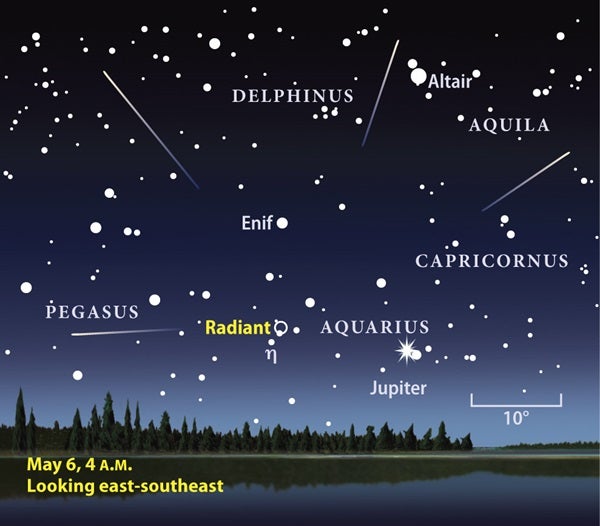In 2009, the shower is active from April 19 to May 28. Unfortunately, you’ll spot only a few meteors each night except for the prime period between May 3 and May 10. During this week, observers with access to a dark observing site could see up to 30 meteors per hour. This number jumps to 60 an hour at the shower’s peak the morning of May 6.
The best conditions occur under dark skies in the tropics and the Southern Hemisphere because that’s where the radiant appears highest in the sky. The radiant is the point in the sky where all of a shower’s meteors seem to come from. The Eta Aquarid’s radiant lies slightly north of the 4th-magnitude star Eta Aquarii. That’s how this shower got its name.
From mid-northern latitudes, the radiant rises during early morning hours but doesn’t climb very high. The Moon is a bright waxing gibbous that sets around 4 a.m. local daylight time May 6. Expect to see long meteor trails, some of them accompanied by persistent smoke trails.
Your best strategy may be to start observing around 3 a.m. that day. Face southeast, and focus on a spot about halfway up from the horizon. Glancing around won’t hurt anything.
Eta Aquarid meteors start as small dust particles cast off by Halley’s Comet during its innumerable trips around the Sun. Every May, Earth encounters the comet’s debris stream. The particles travel fast — some at nearly 150,000 mph. As they enter our atmosphere, they burn up and create an incandescent column of air we view as the meteor.
Interactive star chart — StarDome will give you an accurate map of your sky. This tool will show you where to look to find the Moon, Mercury, and the Pleiades in your night sky.











